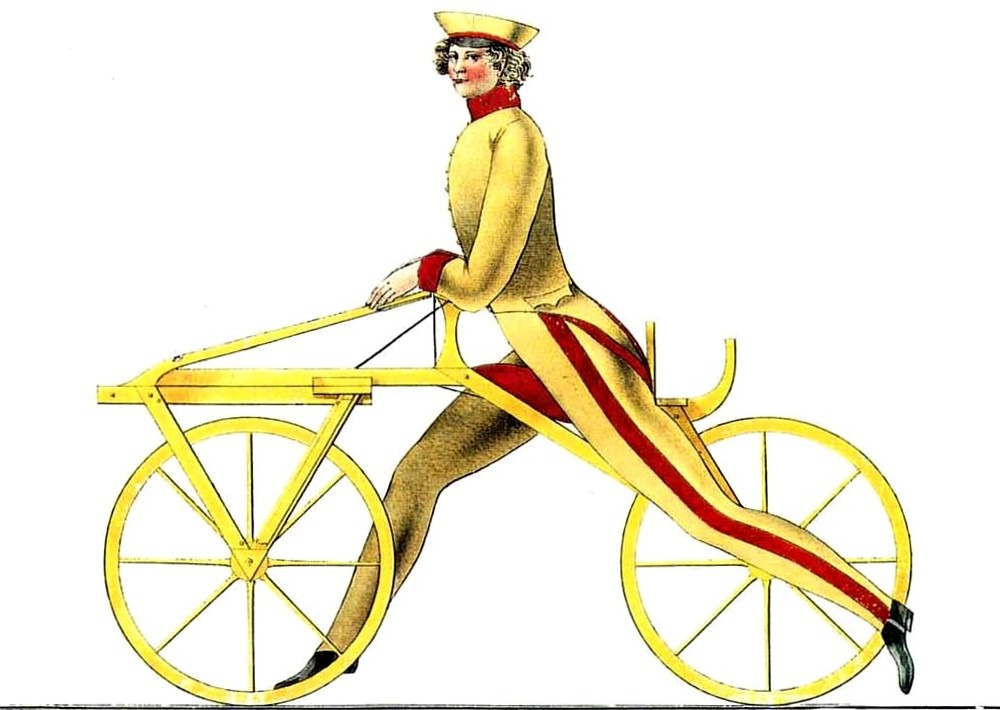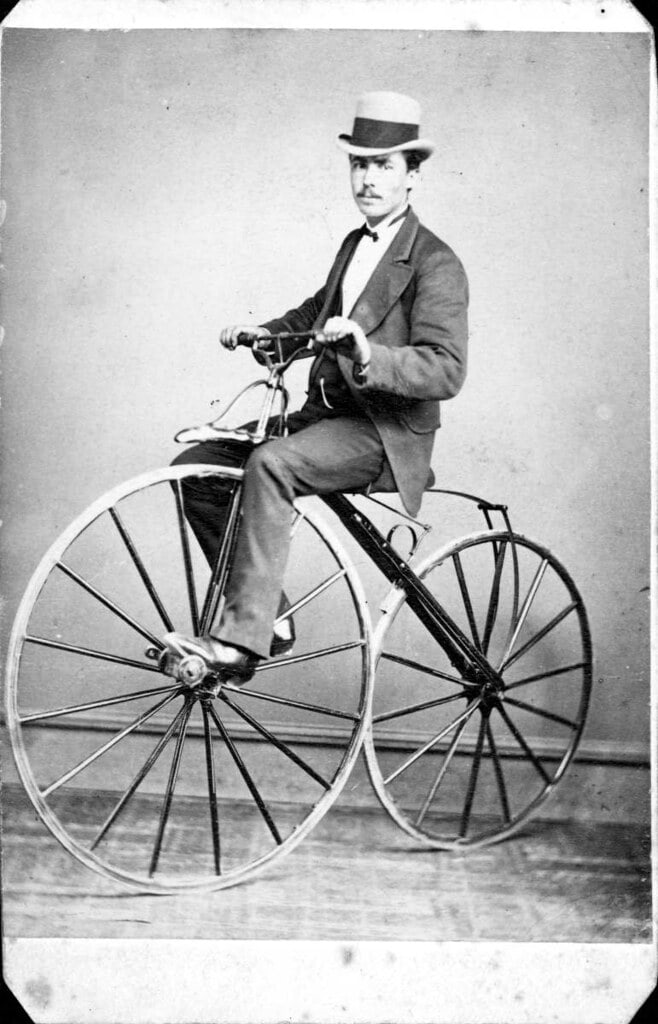Every year, on October 24th, we celebrate International Bicycle Day. Bicycles are extremely popular as an alternative to cars and public transport, offering benefits for the environment, health, and the well-being of their riders. But who invented the bicycle? When was the first electric bike created? To honor this special day, let’s explore the history of the bicycle from A to Z.
Table of Contents:
The most important discovery of civilization – when was the wheel invented?
It’s hard to imagine our world without the wheel. Without it, we wouldn’t have vehicles like trains, cars, or even the bicycle. The invention of the wheel is commonly attributed to the Sumerians in ancient Mesopotamia around 3500 BC, though it is believed that the Chinese independently invented the wheel around the same time. The oldest known wheel-like artifact was discovered in Slovenia and dates back to about 3200 BC. Interestingly, there is evidence suggesting that wheels were used even earlier in Central Europe. A vase discovered in Bronocice, Poland, features a depiction of a four-wheeled cart from around 3635 BC, indicating that the wheel may have been developed in this region. However, the history of bicycle picks up much later, in the late 18th century.
The first bicycle in the world
Contrary to what you might expect, the bicycle turned out to be a surprisingly complex invention, coming about much later than even advanced ships. The first concepts for the first bike were likely drawn by a student of Leonardo da Vinci in the late 15th century. However, the technology at the time was not advanced enough to bring those sketches to life. The first bicycle that could be ridden, known as a “running machine”, was invented and patented by German baron Karl Freiherr Drais von Sauerbronn in 1818. His creation, often referred to as the draisienne after its inventor, had 27-inch wheels and could reach speeds of 13-15 km/h. Drais demonstrated his first bikein Mannheim in 1817, covering a 14-kilometer route in less than an hour – twice as fast as a horse-drawn mail carriage. The first bike by Drais is still valued today and serves as the inspiration for children’s balance bikes.

Source: Wikimedia Commons (available: 23.10.2024)
“Bone shaker” – the invention of the velocipede
A true revolution came in 1860 in France when carriage maker Pierre Michaux added pedals to the front wheel of a draisienne, creating the first bike with pedals. This pedal-powered bicycle differed from its predecessors in materials as well – its wooden wheels were fitted with steel rims, and the lack of suspension made riding quite rough. This earned the bike the nickname “bone shaker”.


Source: Flick (available: 23.10.2024)
The Victorian bicycle – the penny-farthing
Michaux’s bicycle was far from perfect, so other inventors sought to improve its stability. In 1869, James Starley and William Hunter patented a design featuring wire-spoke wheels. This led to the development of the Victorian bicycle, or penny-farthing, a bike with a giant front wheel and a much smaller rear one, resembling the difference in size between a penny and a farthing (old British coins). The large front wheel allowed for higher speeds, but the design was uncomfortable and dangerous due to the high seat (up to 1.5 meters above the ground). Despite these challenges, the penny-farthing became wildly popular and one of the defining symbols of the Victorian era. A few years later, Starley’s nephew, John Kemp Starley, invented the modern bicycle, with wheels of equal size and a diamond-shaped frame. He mass-produced this bicycle under the name “Rover”, a name that later became synonymous with motorcycles and cars.


Source: Wikimedia Commons (available: 24.10.2024)
Moving toward modern times
A significant advancement in bicycle history came in 1888 when John Boyd Dunlop patented the pneumatic tire, which greatly improved the comfort and safety of bicycles, ushering in the golden age of cycling. In the years that followed, various types of bicycles were created, including the ladies bike, which became an important symbol for suffragettes fighting for women’s rights.
Over time, the bicycles we know today started to emerge, including road bikes, BMX, folding bikes, and mountain bikes. The creation of the mountain bike was particularly revolutionary, and it is credited to famed cyclist and inventorGary Fisher, who introduced the first one in California in 1979. This invention further popularized the bicycle, making it one of the most widely used forms of transportation in the world.


The first electric bicycle
It may come as a surprise, but the first electric bike was invented much earlier than most people realize. In 1881, French chemist Gustave Trouvé modified a tricycle designed by Starley, adding a 5-kilogram battery with a 12-volt output. The tricycle could only be started by a dedicated lever. However, Trouvé never patented his design. That honor went to Ogden Bolton Jr., who, in 1895, patented an electric bicycle with a hub motor on the rear wheel and a 10-volt battery mounted in the frame triangle. The modern era of electric bicycles began in 1975 when Panasonic introduced a revolutionary electric bike powered by a lead-acid battery.


The history of bicycle – summary
Bicycles, both classic and electric, continue to be among the most popular modes of transportation and recreation for many people. Their history spans hundreds of years, and they are gaining even more importance in the face of modern challenges. Thanks to many brave inventors, we can enjoy the pleasure of cycling today while helping protect our planet. It’s worth keeping that in mind on this special day – and with the sunny autumn weather, why not take a ride?
Klaudia Figiel
Related posts
Most viewed entries
- Polish Inventors Who Changed the World – Do You Know Them All?
- The Scariest Myths About Electronic Devices – Halloween 2024
- The history of bicycle – International Bicycle Day
- Electricity in a camper van on holiday – a conundrum easily solve
- Off-grid installation on a plot. Is it worth it?
- Charging your electric car at home without a wallbox

